How Do You Win the SERPs in a World Where Writing with AI Is a Commodity?
Lana Rafaela
This article was not partially created by AI. But could it have been?
That’s what we’re here for today! As the owner of a content marketing studio and one of the first people to work on the development of proprietary GPT-3 models, I’m here to share my perspective on how AI content will affect SEO.
And in this article, I’ll walk you through the key scenarios for the development of AI writing and show you how to think about SEO in 2023 and onwards to stay on top of the game.
Let’s dive in!

Hey! I’m Lana Rafaela, the founder of Cherry Red Content, a content marketing studio for post-AI content that helps website owners tap into expertise at scale to stand out with content that an AI couldn’t possibly create.
P.S. We also help Paul with his content, so I’m super grateful for the chance to show you how to stay ahead (even when everything feels like the *this is fine* meme).
Wait – Should You Use AI for SEO?
Honestly? Yes. Your competitors already are.
Whether you’ll use it for programmatic SEO (and put an editor experienced in the niche who can research and edit the content to add more value to it) or to tackle quick tasks like sorting keywords by intent (unless you already use LowFruits, in which case – you’re good!), there’s no use in pretending like AI isn’t going to become commonplace.
However, keep in mind that what we call AI is actually LLM (large language models). They can’t think or resonate beyond what they’ve been programmed to do. The AI will never think of making a fun comparison between gardening and rocket science, which a creative human might.
All the AI tools’ data is tagged, so they fundamentally process information differently from us.
Additionally, your competitors will be tapping into the same information pool as you. This makes it very hard for the AI to create something original.
Personally, my content team and I will keep experimenting with AI to make our work easier. It’s not quite there yet, but with a little creativity, you can have it create storied examples of your ideal buyer’s profile…

… or come up with a joke or two to spice up your content when you’re not feeling up to snuff.
Keep an open mind, and don’t be afraid. Right now, all of these are just handy little tools. The real “danger” is in how we perceive them and how they affect the channels we’re making money from. But whenever adversity arises, it gives us the opportunity to rethink the axioms and shake up the status quo.
How Will AI Writing Affect SEO?
First, let me dispel the myth: SEO isn’t going to die. It’s been pronounced dead and dying since the early 2000s, and here it is – still kicking.
However, SEO will change. If you’ve checked out the latest Google I/O conference developments, you’ve noticed that conversational AI will respond to some of the queries, and there’ll be a new tab in the SERPs: Perspectives.
So let’s focus on these two, with an additional kicker: commoditization.
#1. Everyone’s Writing the Same Content, AKA: Writing with AI Becomes a Commodity
I’ve been in content marketing for around 10 years now, and let’s be honest – the quality of writing has degraded.
When you hit the SERPs for a query, it often feels like everyone’s saying the same thing – because they are.
AI won’t change much about that. If your writers are constantly respinning SERP content, using Google as their only research source, you’re already producing commoditized content.
The only thing AI will do is make it irrelevant sooner. Because it will pull information from the same pool for every prompt, articles will become virtually indistinguishable.

The words are different, but the substance is the same. [Screenshots from a test using one of the popular AI content tools.]
For SEO, this means a lot of nearly duplicate content. While Google wouldn’t currently recognize these two articles as duplicates, you can bet it will start to. As it prioritizes its AI and Perspective results, it’ll want to filter out everything that isn’t original or unique.
Because SEO in 2023 and onwards will no longer be about “helpful,” resulting in thousands of the same articles.
SEO will become about unique:
- Do you have a unique angle?
- Do you have unique first-hand experience?
- Do you have the expertise needed to think about topics on a deeper level?
Right now, some businesses are ramping up their content production to try and reap the AI’s volume benefits. This might work in the short term, but it’s a poor long-term strategy. As we’ve seen with AI websites, you’ll get rankings – and then they’ll drop.
(Read on – I’ll explain what you can do instead!)
#2. Dead Simple Queries Will Be Relegated to Conversational AI
Everyone loves a good, old, no-brainer query; they’re easy to produce content and rank for. The problem is they’ll be replaced by conversational AI like BARD and Bing’s AI. They already have featured snippets or quick answers, and an AI might be a good way to keep them going on the knowledge rabbit hole.
If you’ve been in SEO for a while, this shouldn’t be news. You might recognize these keywords already as “zero-click” searches:
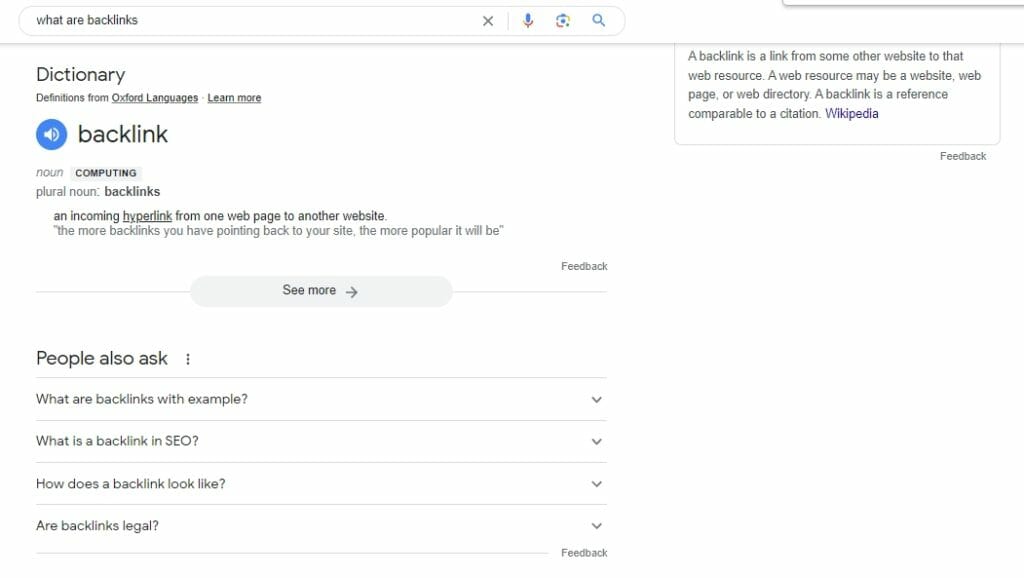
A good, old, no-brainer query! In contrast, if the searcher wanted a more detailed explanation, they’d google something like: “how to get backlinks.”
If the intent is to get an answer as quickly as possible, expect that to become a conversational AI thing – not a profitable SEO keyword.
Look for signals like Featured Snippets to evaluate if your keyword is at risk. (If you use LowFruits, you’ll see SERP features in the dashboard.) If there are already so many zero-click placements and SERP features that the organic results start at the bottom of the page, consider skipping that keyword.
In contrast, focus on the long-tail keywords, especially those that end with “reddit.”

Google already has zero-click features for this query, but when it comes to making a decision – people want to hear other people’s reviews. Conversational AI is convenient, but this is spending money that we’re talking about!
#3. What Do the Perspectives Tab and Google Search Generative AI Experience Mean for SEO?
Wrapping up our risk assessment, we come to the question of the Perspectives tab, which is the most indicative signal for the future of SEO.
If you look at the Perspectives tab mockups, you’ll see they have a few things in common:
- They’re full of forum results (blue apples in your LowFruits dashboard).
- They feature videos.
- There are a whole lot of faces!

This is the ultra-human content, as I call it.
Everything that doesn’t require human expertise can be resolved with conversational AI. But those finer things, where you want to hear from other people (personal issues, buying advice, reviews, etc.) – they’ll be in the Perspectives tab.
Written content won’t go away, but you’ll need an extremely unique tone of voice, use a personal perspective, and talk about your first-hand experiences to pop up in Perspectives.
However, I still recommend testing other channels. If the results keep getting more interactive and dynamic with different content formats, Google may be able to solve its Reddit search problem and get more relevance for the new audiences – but you’ll have to keep up.
And speaking of keeping up…
5 Things You Do to Prepare for the Post-AI SEO Era
Hopefully, I’ve already given you a few ideas on how to prepare for SEO after/alongside AI, but here are the to-do items I want you to test in the next few months. Once you’ve done it, drop a comment here or DM me on Twitter and let me know how it went!
I’ll rank the following from the lowest to the highest effort.
#1. Start Grabbing Nuggets of Value on Social and Forums
We’ve been thinking of the importance of perspective at Cherry Red, my agency, for a while now. And while we have some awesome clients who let us interview their team members and customers, others just want to expertise-backed content without necessarily being experts or spending a lot of time filling out our briefs.
So, how do we hack the experience & expertise problem?
We use social media and forums to get our “nuggets of value,” i.e., advice, opinions, and perspectives you wouldn’t normally find in the SERPs.
Out with the generic info:
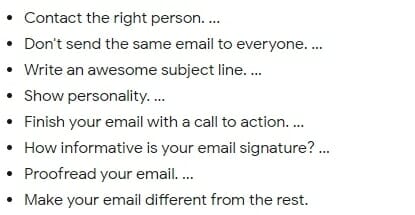
Oh wow, that’s original. Totally not like all the other content in the SERP. /s
… and in with original advice that you don’t see every day:
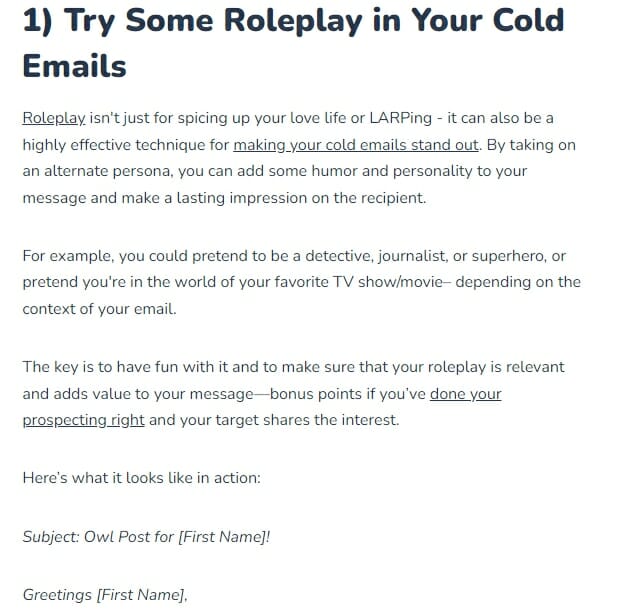
An example of an article we created with this method.
Remember what I said? In a world of commoditized content where everyone’s using the same AI with the same factoids, you’ll win at SEO by creating content backed by information an AI can’t easily access.
This is a good approach if you’re creating content on a budget. You can even add links to specific advice you’d like to see included in your writer briefs.
#2. Forget the Skyscraper Technique and Focus on Investigative Content
I know we’ve been having a drawn-out love affair with the Skyscraper Technique, but let’s face it: you could do much better things with that budget.
Unless you can do a wholly fresh take with actual value adds, and not just respinning, consider a different approach.
Do more investigative topic research instead:
- Launch a survey and share it with your audience/customers about a topic you plan to target.
- Interview your audience/customers for first-hand experiences and opinions.
- Identify the key micro-influencers in your niche and hop on a call with them.
- Want to cover a topic comprehensively anyway? Summarize it. Offers answers in fewer words, so your audience can actually get the info they need without having to struggle through a 4k-word behemoth.
One thing we love doing at our studio is talking to a designated “representative” from the client’s company. That’s typically someone from the sales or customer experience team who’s in constant contact with customers, and we get to interview them as a source. They’re our ears to the ground, and they help us create the right angle and provide the most necessary information.
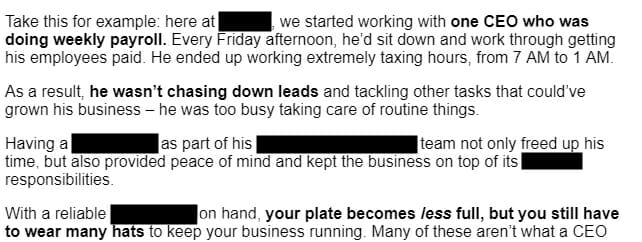
There’s nothing like a real experience to make your content feel more true to life.
Can you find a good source among your customers or audience members? Look at your evangelists.
Alternatively, consider using HARO or HelpAB2BWriter to find experts and sources.
#3. Experiment with New Content Formats and Channels
Videos in the AI Era
Even if you’re an introvert through and through, you can still test videos.
Remember those video essays that pop up in your recommendations from time to time? They’re relatively simple to do, provide plenty of value, and don’t require booking time at the hair salon.

Notice how these often use gifs, web pages, and dynamic visuals? All of that keeps the attention on what you have to say.
Similarly, experiment with short-form videos. You don’t have to download TikTok, but let’s be honest – an increasing amount of people are using social networks to perform searches and get their fill of educational content.
What Will Social Media Look Like Now?
It’s going to be on fire, but the organic reach is declining, so calculate paid advertising into your Customer Acquisition Cost.
My favorite budget-friendly tip is to test the post organic first, and if it resonates with your target audience, repurpose it into an ad.
Still, have a plan to “own” your audience. Even if you kick butt at social right now, you’re still subject to algorithm changes (and we know how that burns from SEO).
Get yourself a neat little funnel set up and collect email addresses so you have a backup in case something goes bump in the night.
Cheatsheet: Best Performing Content Types per Social Network
If you’re wondering how to translate/repurpose your SEO blog content for social media, here’s my quick cheatsheet:
| Social network | YouTube | TikTok | |||
| Content types | Top, middle, and bottom-of-the-funnel content, Tips & tricks, Opinions on popular and trending topics | Tutorials, Educational content, Middle and bottom-of-the-funnel content, Entertainment, Product reviews, Informational content: news/trends/updates | Local businesses, Top and middle-of-the-funnel content, Tips & tricks | Trends, Short-format educational content, Informational content, Tips & tricks, Buying inspiration | Opinionated content (thought leadership), Carousel informational & educational content, Listicles |
Start testing social media by repurposing a blog post that performed well.
Adapt the substance for the network, add graphics or videos, or – if you have a massive guide, break it into a few smaller posts.
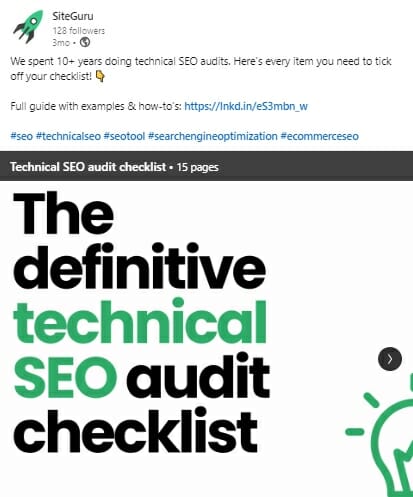
Repurpose your in-depth guide into a LinkedIn carousel to get more traffic sources. A recent example we helped SiteGuru with.
Rethink Your Content Distribution
If they zig, you should zag, or: search engines have been an absolute traffic goldmine, but we’re approaching the era of change. This means expanding into social, but it also means you should reconsider your distribution.
When you publish a blog post, repurpose it for social.
Then, repurpose it for forums, too. Create a list of all the relevant forums (including Reddit and others specific to your niche), and start engaging.
On some, you can share your own posts, but on others, search for the questions recently posed and see if you can answer them. Add a casual link for those who want to learn more.
I love this example from Bastet Noir, where the team provided value by answering potential customers’ questions. In time, they were able to mention their own products and increase their revenue.
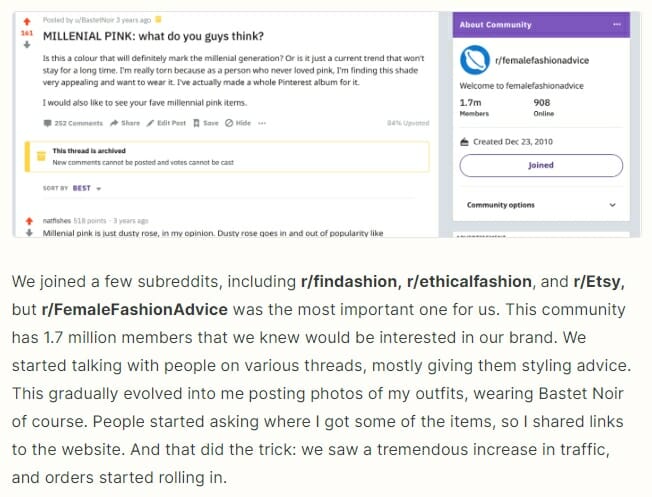
Source: Zapier
One hacky way to find the best threads is to use LowFruits as you normally would for keyword research and keep an eye out for weak spots marked with blue apples. Those will point you to the forum results that rank highly and appear in the Perspectives tab.
Once you’ve found them, add your two cents!
#4. Branding, Branding, and Branding
You can’t afford to be generic anymore.
Now, you don’t have to go full-on-Youtube-thumbnail kinds of attention-seeking, but you do need to decide how you want to differentiate.
Whether that’s by having a specific angle on a subject, championing a founding story that your audience will resonate with, using recognizable visual styles, or something else, you’ll want to clearly know what sets you apart – even if you’re running a niche website, and not offering products or services.

In some cases, your irreverent tone of voice will be super fresh to your leads.
Branding Differentiation Tips for SEO in the Age of AI
If you’re not sure where to get started, here are a few of my favorite branding differentiation tips:
- Tell a story. Why did you start the business? What about the topic are you passionate about? Create a convincing “About” page, and use it to inform the rest of your content. (E.g., include chunks of your founding story.)
- Provoke an emotional response. I love this one for B2B – agitate the frustrations, pain points, and use very visual examples. Sure, talk about revenue, but acknowledge all the (minor) annoyances that will pop up unless your reader solves the problem.
- Create content different from your competitors. Try interactive content, engage with them in the comments, start a community, use a repeated storytelling framework, etc. The list is endless. Even if you’ve been sticking to proven formulas, now’s the time to test out your wildcard ideas.
- Offer a creative on-page experience. This ties into producing different content, but it could be more than that. For example, if your competitors aren’t offering chatbots or comment sections, you could – especially if that works for your visitors.
Branding is definitely a tricky one, but ask yourself (or better yet – your customers) what sets you apart in their eyes, and you’ll stumble upon the right path. And when you’ve found out what works for you, create a style guide that you can share with your content producers.
#5. Forget about Low-Commitment Content
We’re facing a new frontier, and so we’ll all need to work harder to find new, creative ways to stay relevant and expand our distribution channels.
But as search engine optimization turns into search optimization (including social media and forums), focus your efforts on presenting yourself as a unique resource.
This means you’ll have to spend more time:
- Sourcing new perspectives and fresh insights
- Researching and polling your audience
- Testing different channels and formats
For example, if you run a niche website, hire writers who can test out the products first-hand or have in-depth experience in the area. If you can’t find writers, hire passionate hobbyists (as Dim did for his successful BBQ website) and a good editor.
Similarly, conduct original research and present it in an interesting way.
Wrapping Up: How to Succeed with SEO in the AI Age
If you want to win the SERPs when writing with AI is a commodity, think outside the box.
AI will make (SEO) content very, very accessible and even commoditized. If you’re in this for the long haul, set up the following:
- Do your keyword research right.
- Talk to your customers and take your baby steps towards creating a brand.
- Create a good content operations process:
- Hire writers with knowledge of the subject, and brief them thoroughly.
- Spend more time researching than producing the content.
- If using AI, get an editor (or a hobbyist) experienced in the niche.
- Have a distribution process that doesn’t solely rely on search engines.
- Experiment with new content formats.
- Keep an eye out for new opportunities.
SEO isn’t going anywhere. But we’re in for a wild ride. Now’s the time to unleash that little guerrilla marketer in you and shoot for the sky.
I’m dying to hear what you cook up!
Amazing Article.
Thanks for share!
Thank you, Jim Bob – glad you found it helpful!